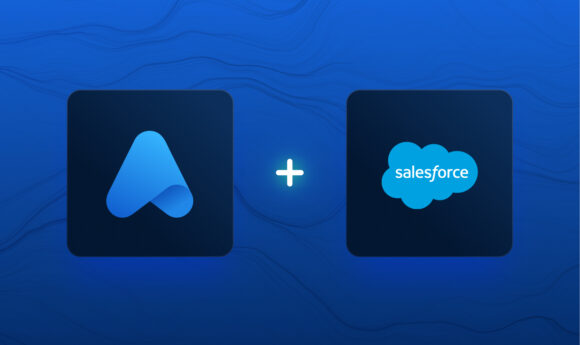Low-Code and No-Code Solutions for Insurance (and Other) Businesses

This post is part of a series sponsored by AgentSync.
Low- and no-code software is becoming a must-have for insurance businesses that recognize the need for adaptability and speed on an ongoing basis.
We’ve shared elsewhere how Salesforce’s low-code and no-code software solutions enabled AgentSync to begin our initial compliance management product with the barest amount of effort. Instead, we were able to spend our time and energy in figuring out the ticky-tacky basics of state regulation and jurisdiction-by-jurisdiction nuance in license classes and lines of authority.
To be sure, you don’t want to discount the knowledge and experience of software engineers who can code from the ground up, but scalability also demands that not every problem is solved by tech backed by weeks of bespoke coding. We’re sort of passionate about scalability here at AgentSync, and we’re founded on the premise that insurance technology should be more intuitive, processes should be more automatic, and scalability shouldn’t be inherently tied to staffing. While our products apply that philosophy to compliance, it’s hardly the only area of the business worth looking at through that lens.
What do we mean by low-code and no-code?
Low-code and no-code software options are what tech geeks call “highly configurable.” They require little in-depth knowledge of software languages, and instead rely on blocks of code to build a user experience with pre-set features.
If you’re familiar with web development, think back to early web pages, where the developer needed to put blocks of code text to tell the browser what color the site was. Later, you had web management services that allowed you to create personalized pages with little coding. Now, just about anyone can start a blog or personalize their social media page, no code necessary.
These highly configurable features aren’t limited to webpages. Even software developers can take advantage of these features by using building blocks for their applications.
Low-code options are exactly what they sound like – configurable variations of application development that require a little but not much code and hands on software development.
No-code options take it a step further to allow developers to stack features together for a more intuitive, user-friendly experience both on the front and back ends.

Reasons to emphasize configurable options for your tech
Executives at insurance carriers and agencies across America, no matter how savvy or low-tech, should be taking an interest in the configurability discussion as they plan their budgets and strategize their workforce.
A statistical roundup blog from no-code app platform Quixy underscores: no-code and low-code software development helps make cloud-native applications more than 10 times faster with 70 percent fewer resources.
Frankly, how could you not want that kind of powerful impact?
1. The talent crisis and your software needs
Industries across the U.S. are having a bit of a bad time trying to get fully staffed for the things they’d like to do. That goes extra for insurance, and it goes extra extra for niche spaces like insurance industry software engineers.
That Quixy data underscores this point: in a 2018 study, 80 percent of organizations surveyed said they couldn’t keep up with staffing their IT teams the way they wanted to. Do you think those statistics look better today, or worse?
Even if you don’t intend to bake products in-house, your existing tech stack needs to have service, and any tech tools that you use will benefit or suffer from the talent gap based on whether or not their supporting businesses can retain the talent they need. Having configurable tools means you – or your tech partners – can upgrade the software you need without a heavy lift of people power.
Automating the software side of things is the future. In fact, Gartner predicted 80 percent of tech tools will be built by those who don’t have software development skills by the close of 2024, thanks to the rise in configurable software tools.
This is certainly a challenge for carriers and agencies working with their own bespoke and legacy internal software systems. Unfortunately, many companies lean into the sunk-cost fallacy, thinking if they have spent millions of dollars on the tools that got them to today, those tools are the only way to take them further into the future. Otherwise, all that money for development will have been lost, right?
Wrong. The thinking of “this is how we’ve always done it” is a sure trap to keep your business mired in manual processes.
2. Maintenance and upgrades are easier
If your tech stack is built on a configurable underlying solution, then, whenever your parent software upgrades its tools with security features, bug fixes, and other changes, your apps and tools get a boost automatically.

Compare that to the cost of maintaining internal bespoke legacy systems. As the software worlds change, your tools become more obsolete and difficult to use with other systems. Data gets more difficult to transmit and protect. Each upgrade to your existing system is a threat, a new opportunity to expose faults and failures.
Instead of being able to embrace new features and evolving technologies, your team sees innovation as an inconvenience!
Change the paradigm by embracing technology, both internally and through your tech partnerships, that is highly configurable and adaptive, constantly iterating for improvement without you having to invest in an army of staff just to maintain software.
3. It’s the future
Although 100 percent of businesses that have invested in highly configurable software solutions reported a positive ROI in one study, nearly half of businesses overall reported they haven’t stepped into the no-code or low-code development environment. With those kinds of ROIs, the businesses that hold out will undoubtedly see real dollar consequences of their decisions.
So-called “citizen development” can also make it easier for insurance institutions to cross-train staff. Instead of having siloes between software developers and insurance wonks, citizen developers have more bandwidth to combine both knowledge bases in their skill sets. Breaking down silos while also making adaptable tools that are more user friendly seems like a win-win-win.
The results of configurable tech: more resources for other things
The real question of configurable technology comes down to resources. Would you rather spend more resources on custom from-the-ground-up software – development, staffing, maintenance, and upgrades – or on just about anything else?
We’re a software company, so spending time and money on software development makes sense. But insurance agencies and carriers may want to spend more resources on their differentiating products, developing policies and improving services.
Highly configurable tools are here to stay, and those who embrace this evolving technology trend will be well-rewarded with a work-smarter-not-harder option for addressing their pressing digital needs.
At AgentSync, we’re all-in on the message that efficient, automated, and intuitive tools are the future of insurance. If you’re ready to see how we can help you upgrade your tech stack with configurable producer maintenance tools, check out our solutions today.




